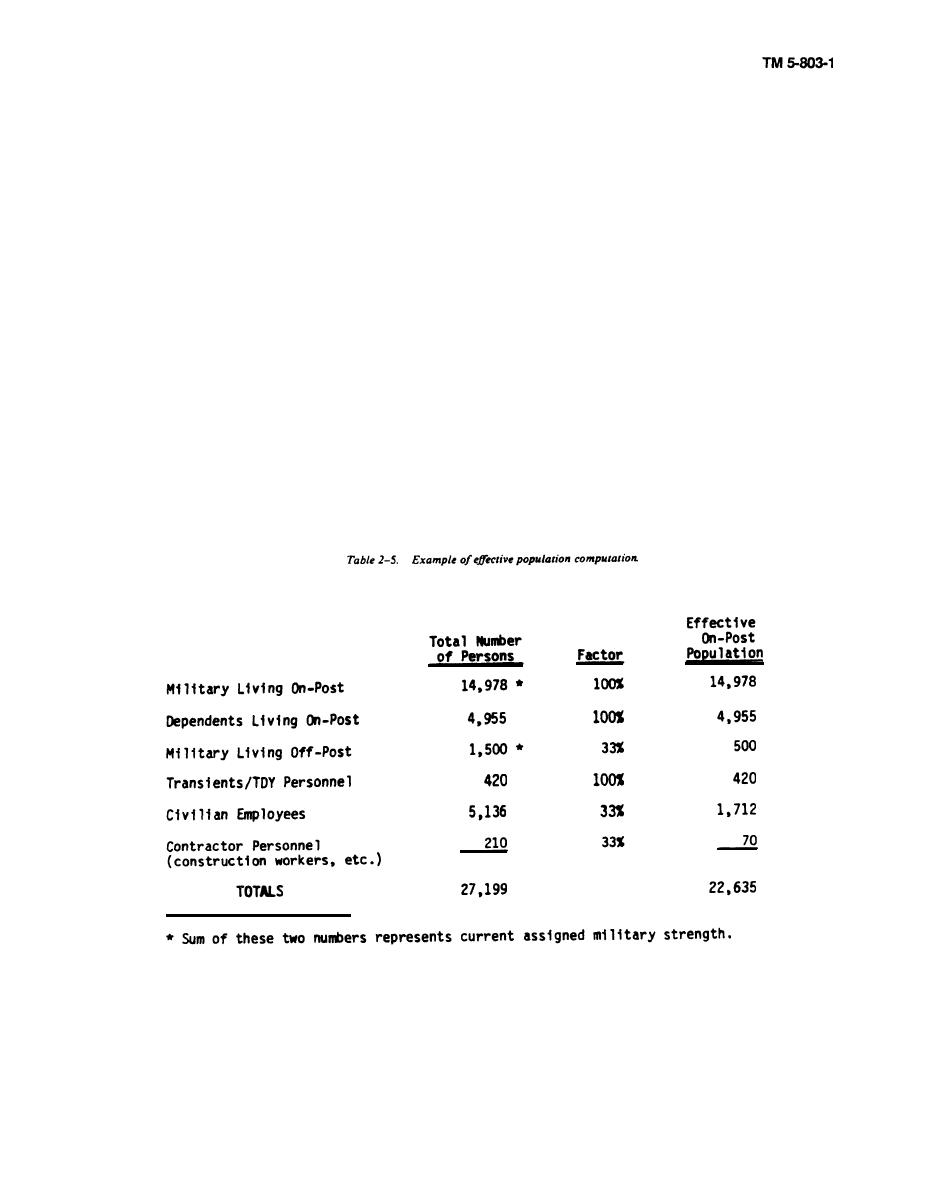
utility systems bear a direct relationship with land use.
(b) Existing traffic data should be reviewed to
The utilities analysis should focus upon the major components
identify specific deficiencies which could limit future
of each system. Installation utility system maps, special
development These deficiencies may include:
studies, system operational and testing records. and
- At-grade vehicular/rail crossings.
system analyses may be used to tabulate historic con-
Inadequate load limits or poor structural condition
sumption rates and develop projected consumption rates
of bridges.
based on the effective population. These rates establish
- Traffic congestion.
system carrying capacities to support the installation
- On-street parking.
planning strength. The analysis should be coordinated with
(c) The effect of any planned or programmed
off-post data analyses to identify the impact of off-post
roadway improvements on land uses should be evaluated
supply or service limitations on installation systems.
Such effects include changes in traffic volumes, changes in
Schematic diagrams should be prepared for each trunk line
access points to major traffic generators, or changes in
utility systems. These diagrams will be used to analyze the
routes used by service and truck traffic.
relationship between various land use areas and utilities.
(2) Air, rail, and water transportation facilities.
(1) Effective population.
On-post air, rail, and water transportation facilities should
(a) Carrying capacity for each utility system is
be evaluated to determine their ability to support installation
determined by the effective population of the installation.
operational requirements. Evaluation factors include the
Effective population is based upon a ratio of the total
structural condition of facilities, the capacity limits of
population using installation utility systems on a given
cargo or personnel handling facilities, and the number and
day. It is computed as shown in table 2-5. The effective
type of rail cars, aircraft, or waterborne craft which can be
population served differs for the various utility systems
accommodated
within an installation. For example, a portion of a family
c. Utility system. Installation growth is dependent
housing area may discharge its domestic waste directly to
upon the adequacy of the utility systems to meet increased
an adjacent municipal sanitary sewer rather than to the
demand and peacetime environmental constraints while
on-post system facility, even though that area may obtain
maintaining recommended reserve allowances for demand
all other utility services from the installation.
surges. Like the transportation system, the installation's
2-19


 Previous Page
Previous Page
